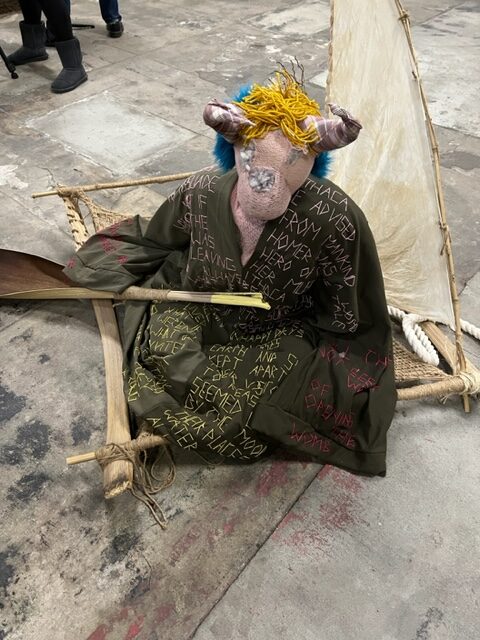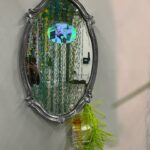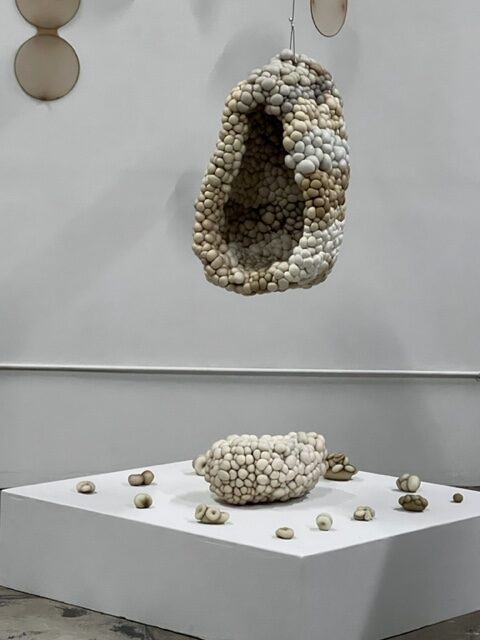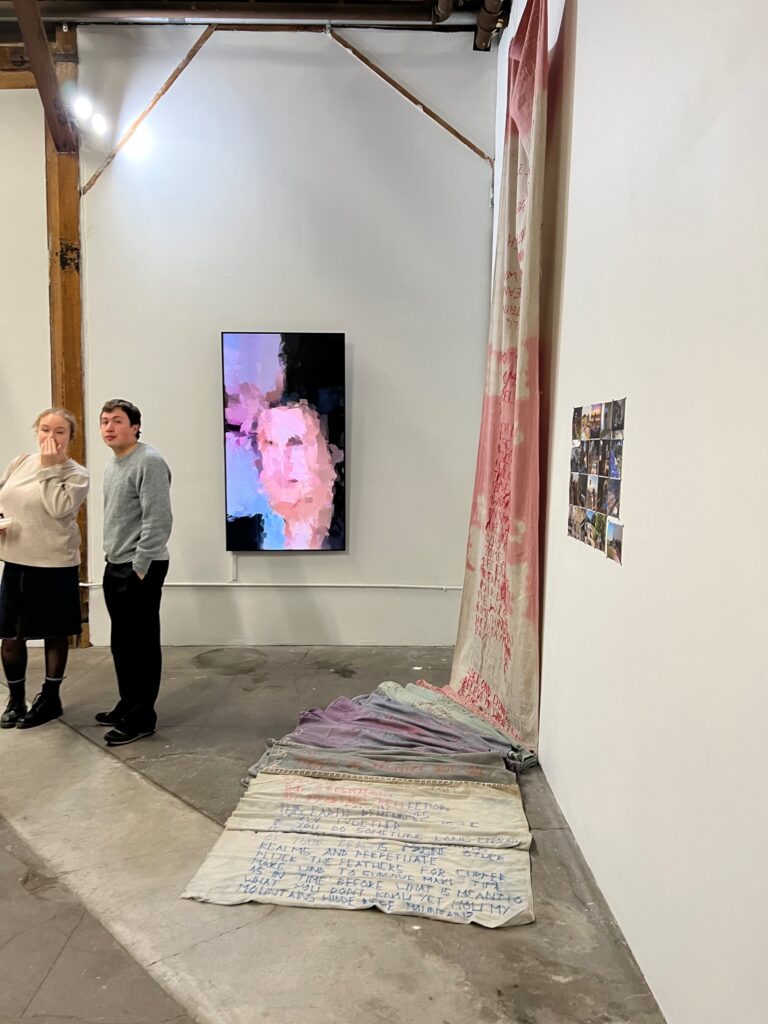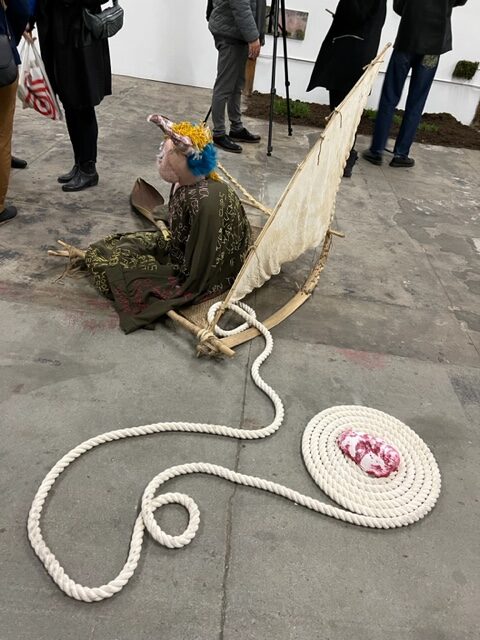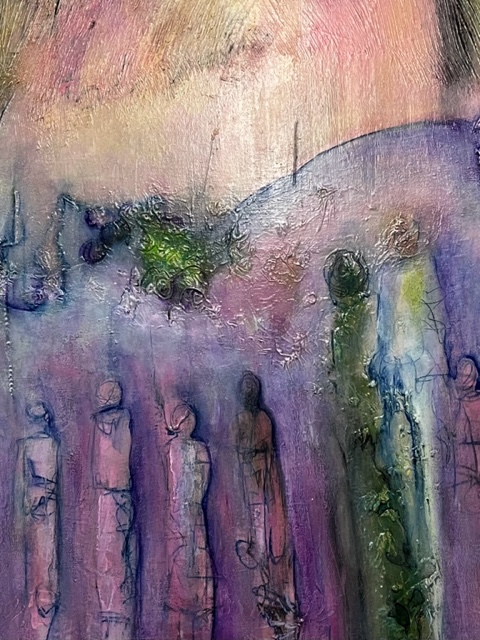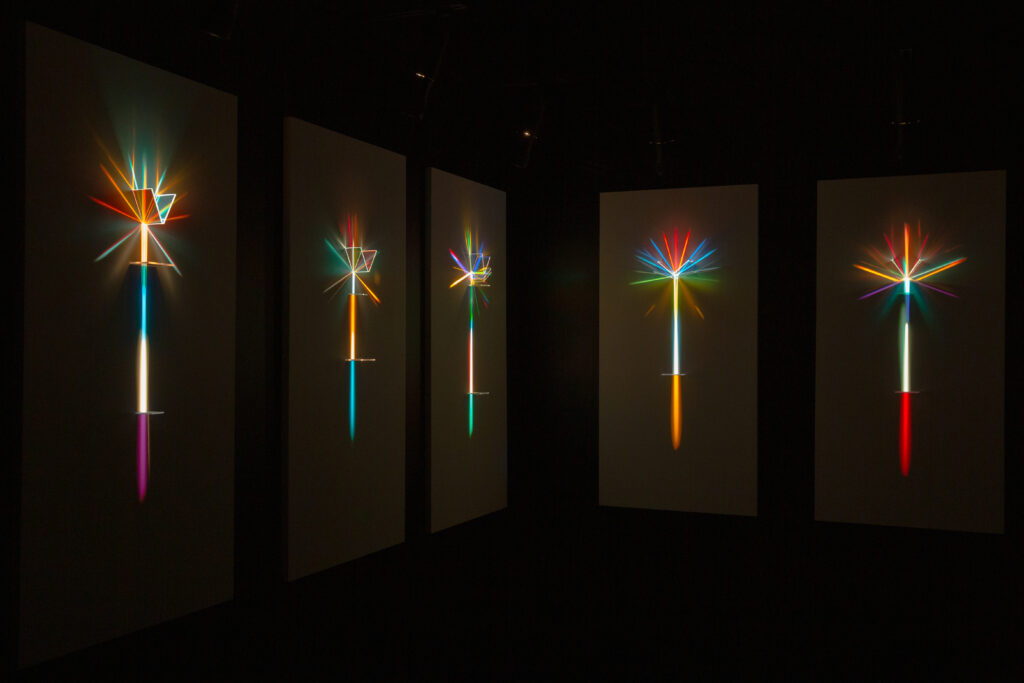
The first solo exhibition by astrothebaptist, a.k.a. LJ Kim, Home in Space, is a dazzling, metaphysical wonder. The artist’s chosen name is appropriate – he is leading his viewers, literally and figuratively to see the light. Creating rainbows and patterns using glass and light, astrothebaptist transforms image into something both transcendent and empowering, creating a new way of seeing color and light that uplifts and resonates.
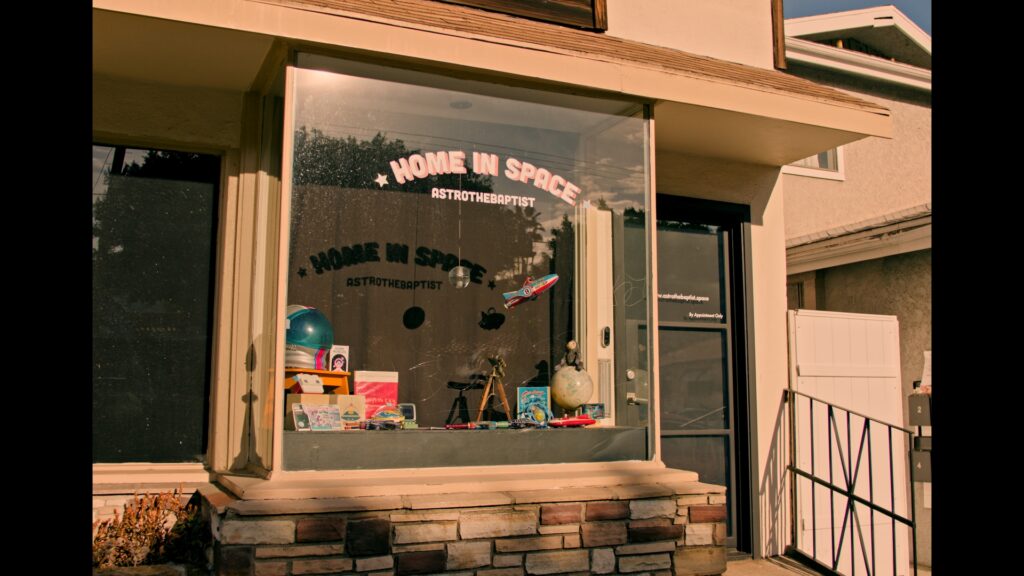
Exhibited in a Glassell Park pop-up gallery space through March 19th, seeing this radiant work lifts the viewer into an entirely different place. Having transformed the gallery space into a black box experience, he shows visitors how he interacts with and transforms a single source of white light using dichroic beam splitters. In this way he reflects different parts of the color spectrum against a canvas, creating a dimensional wall sculpture presented with painterly skill from beams of light and the special positioning of the glass he uses.
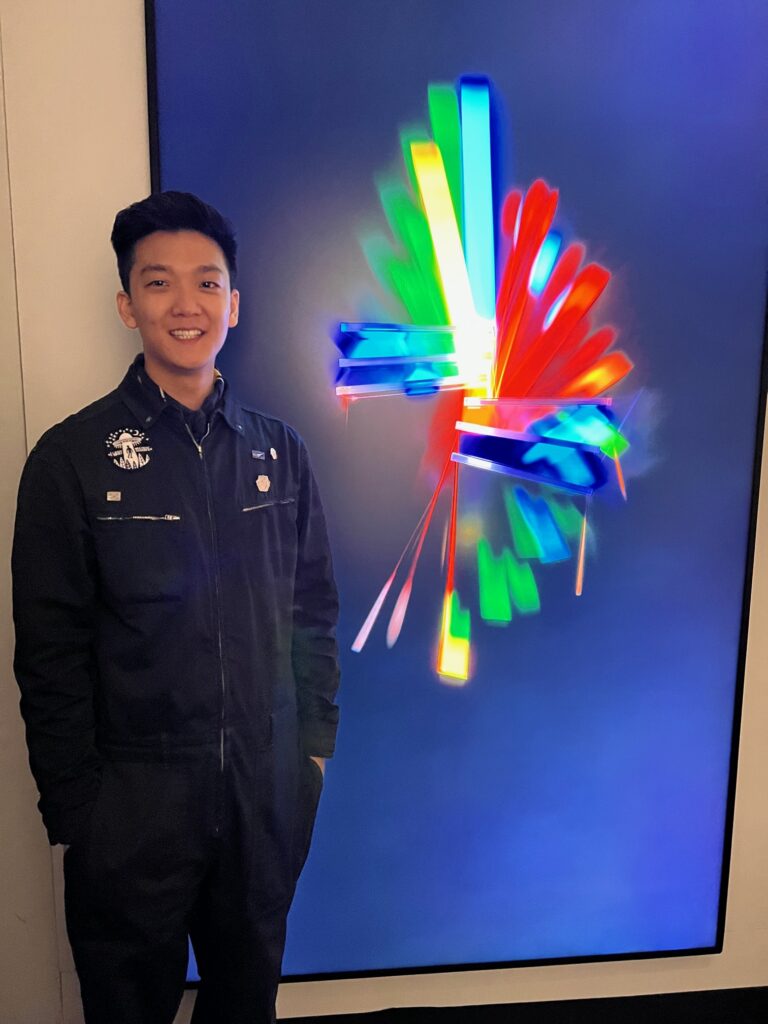
The works are both vibrant and mysterious. During Home in Space, astrothebaptist not only shows his dimensional light paintings, he demonstrates his process, and how he can change a work by manipulating the position of glass pieces and light beams. Just as watching an involving movie lifts the audience out of the prosaic space of the theater and into another world entirely, so too does this artist’s brilliant rainbow of work.
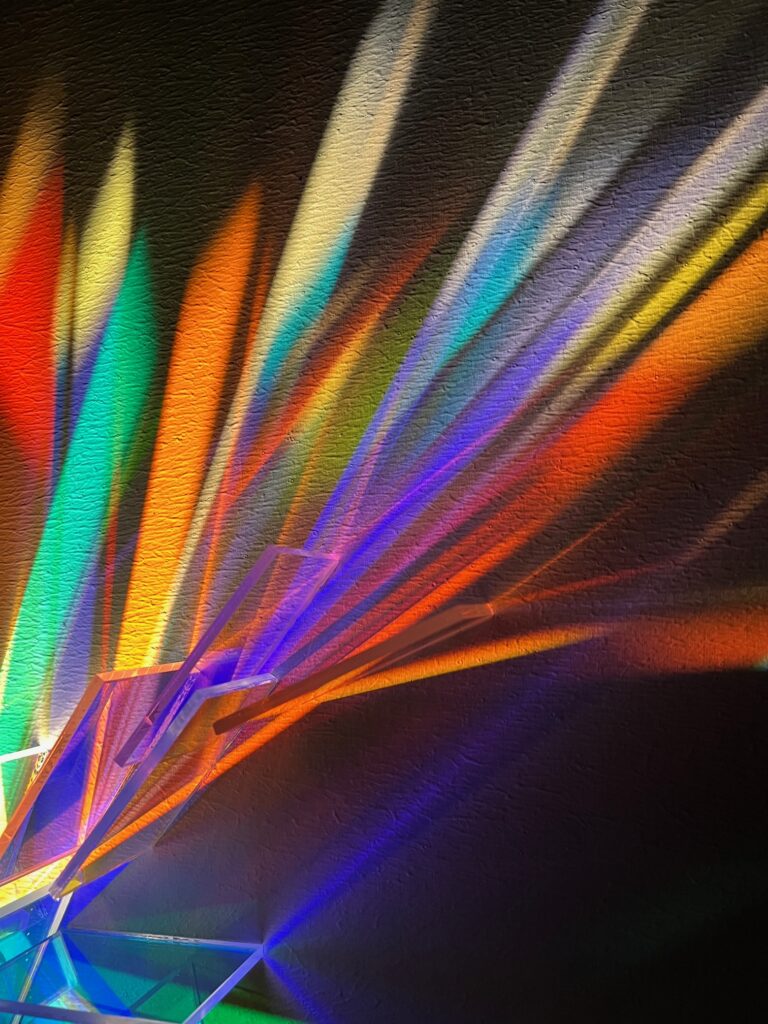
As astrothebaptist’s first solo exhibition, the exhibition’s beauty and unusual materials are perhaps closest to a kind of floating neon in appearance, more than any other form. He describes the exhibition as one in which viewers are invited to join on a journey to the “far reaches of the cosmos, where the details of everyday life fade away.” Such a description in other hands might be considered hyperbole, but not here.
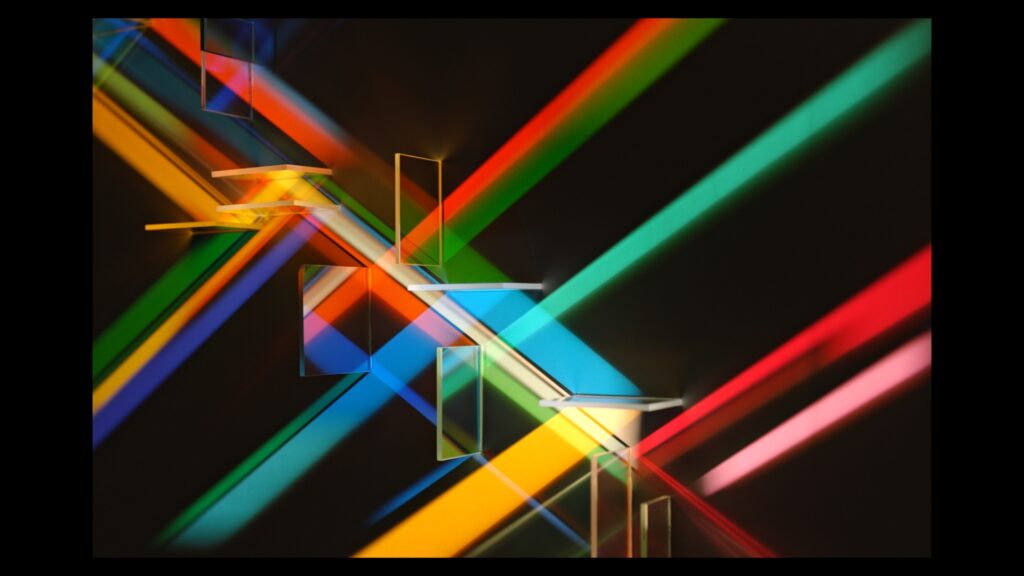
Manipulating different wavelengths of light, the artist shapes the colors and patterns almost as if he is sculpting a less ephemeral material. It’s a zen-like experience for both the artist and the viewer, one which the artist hopes will expand a personal view to one that is connected to “the wide world around us.” It also connects us with a true sense of home, and what that means for each person.
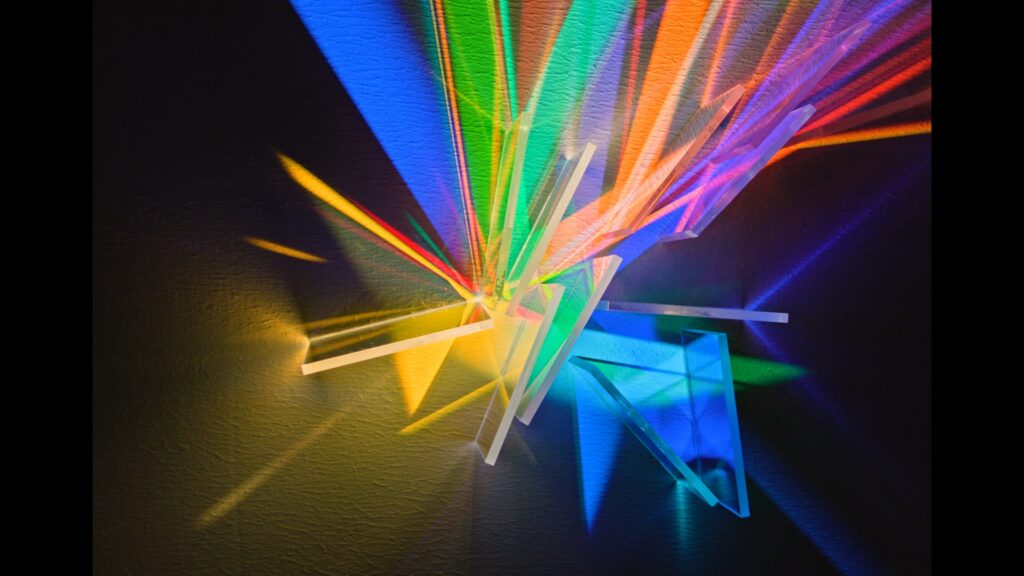
The New Jersey-born artist himself says he felt estranged from the concept of a permanent, structured home, raised abroad in a variety of very different locales by his Korean immigrant parents, returning to the U.S. after many years. According to the artist, “Through my study/play and exploration of light, I have found a different perspective on what home can mean. When I look at light and the way it behaves, from its reflections and refractions to its absorption and mixing of different hues to create new colors, I see a metaphor for the way cultures and perspectives interact and evolve over time.” He adds that “Light is constantly traveling and connecting everything in the universe, just as our experiences and identities are constantly evolving and shaping one another. It’s this idea of home as a dynamic and interconnected concept, rather than a static place.”
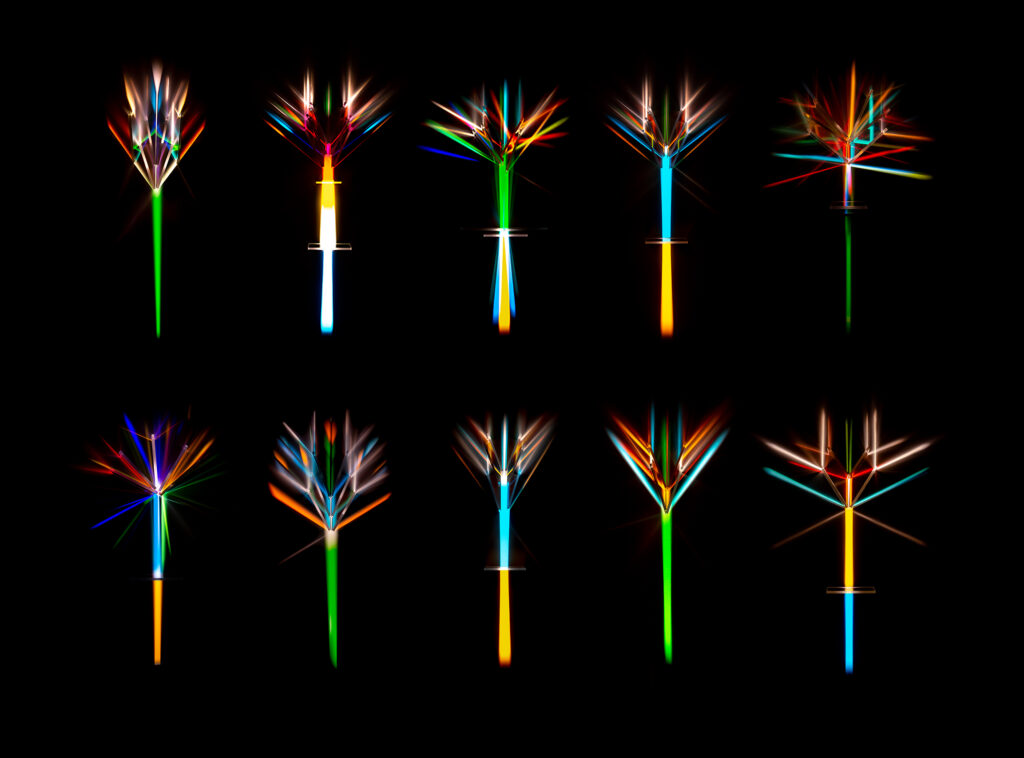
In short, his sense of belonging has found a center from a cosmic distance, a perspective born of color and light, providing a mind altering and heart-opening window to the world that is perhaps as resonant and all-encompassing as a NASA astronaut’s view of Earth from distant space.
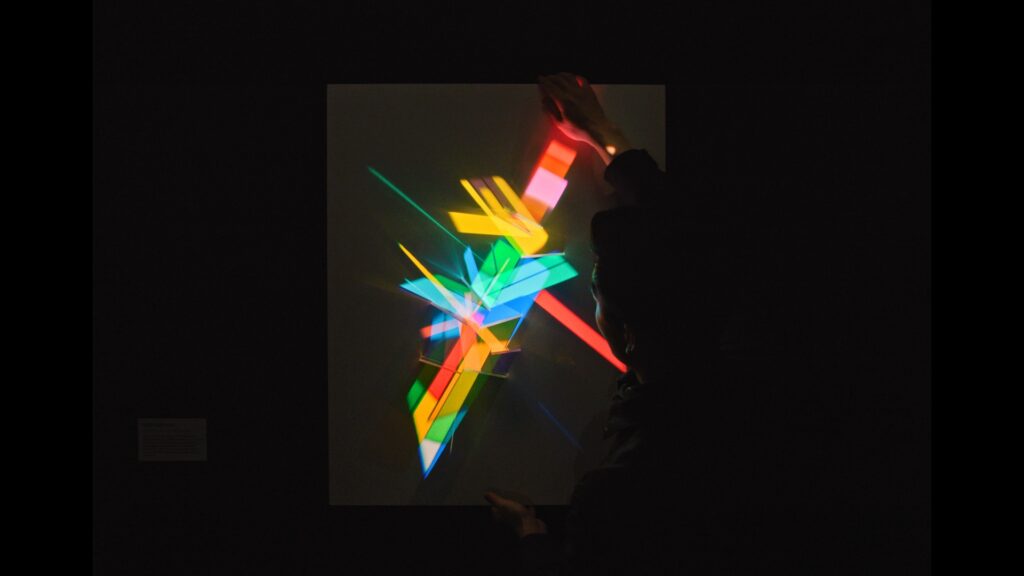
“For me, the concept of ‘home’ has always been a complex and evolving one. As someone who has lived in different places around the world, I never felt like I had a fixed home in the traditional sense,” he asserts. By playing with light and color, I hope to convey a sense of belonging and wonder that transcends physical boundaries and celebrates the unity of all things in the cosmos. For me, this is what makes working with light such a powerful and transformative experience.”
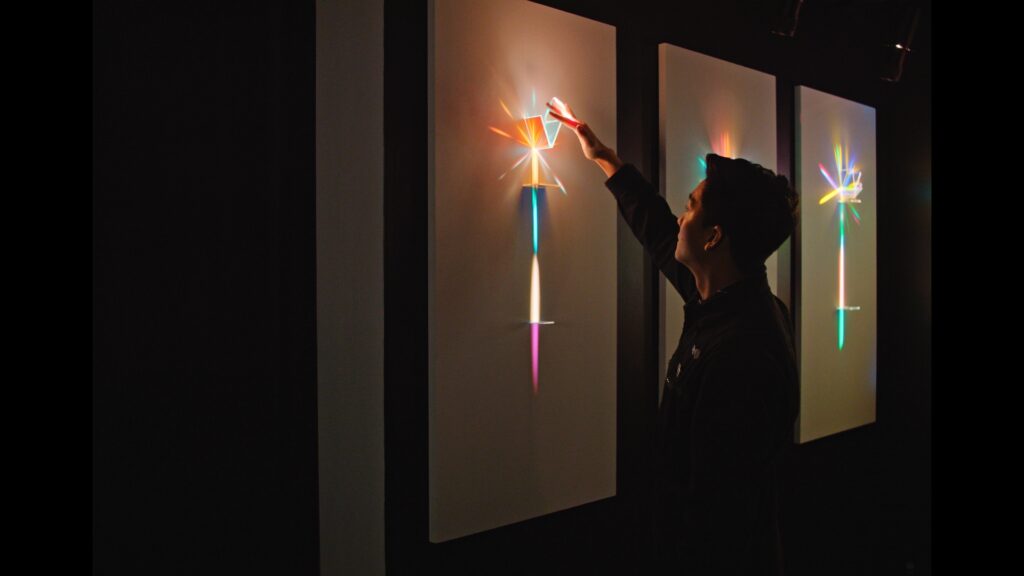
The eleven astonishing permanent, wall-mounted artworks in the artist’s first exhibition provides viewers with the same perspective of wonder and joy, innocence and power.
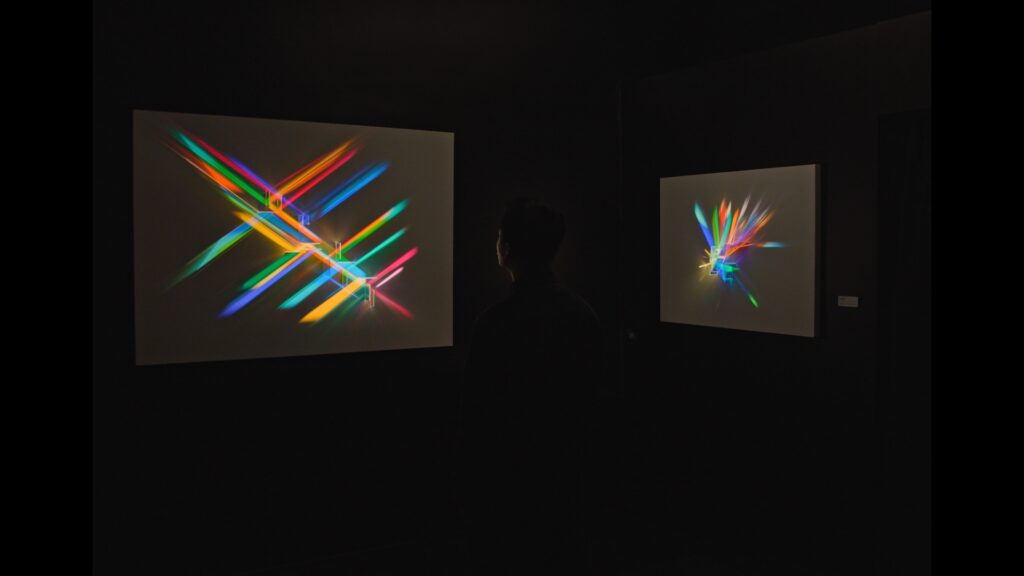
He explains that “As an artist, what draws me to working with light is the multifaceted nature of this intangible medium. On one level, light has a deep spiritual significance, with many cultures and religions using it as a symbol of life or a higher power.” He adds that the unique qualities of light, its capability for movement, reflection, refraction, and ability to change color through the introduction of filters or layers has created a vast, exciting, and playful medium for him. “Working with light is like exploring and discovering something new each time, with endless possibilities for creation and animation. In a way, it is a metaphor for the mixing of cultures and experiences, just as light mixes and blends to create new colors and shades.” In short, using light as his medium, astrothebaptist explores something deep and vibrating at the heart of human nature, or perhaps of nature itself. “I tap into this sense of discovery and wonder and create a space where people can connect with the natural beauty of the world around them.”
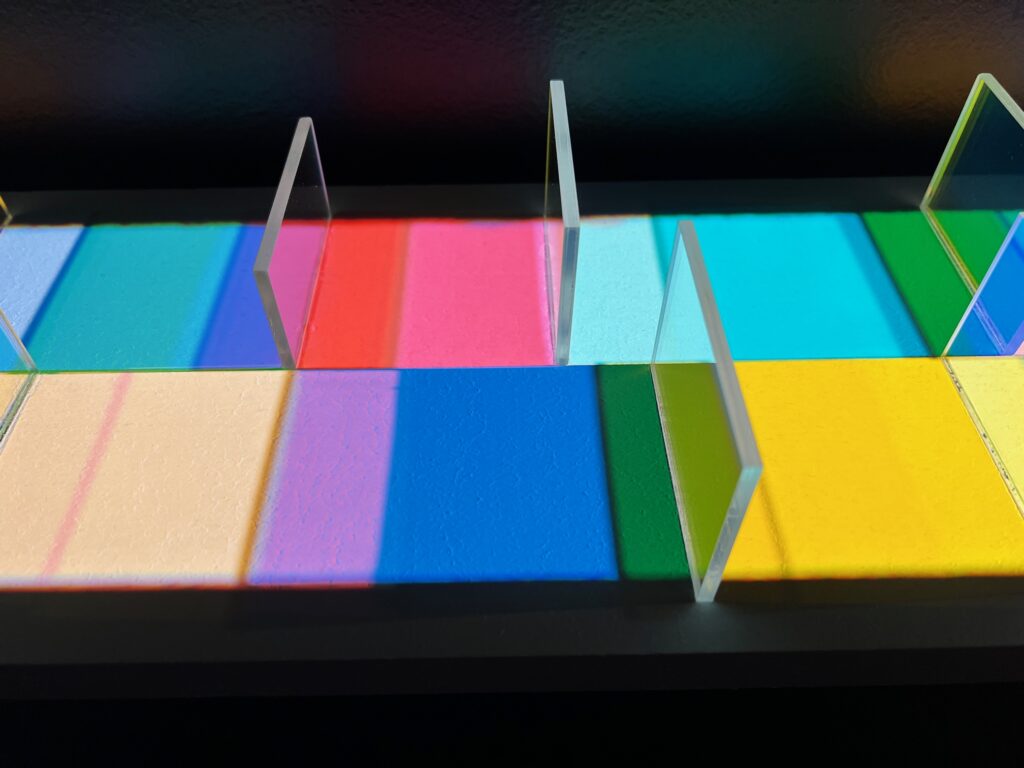
The artist had a flourishing career as a filmmaker and working in film production, for over 15 years. Both his film career and the pandemic shutdown in part led him to create this whole new box of light “crayons,” as he describes his material.
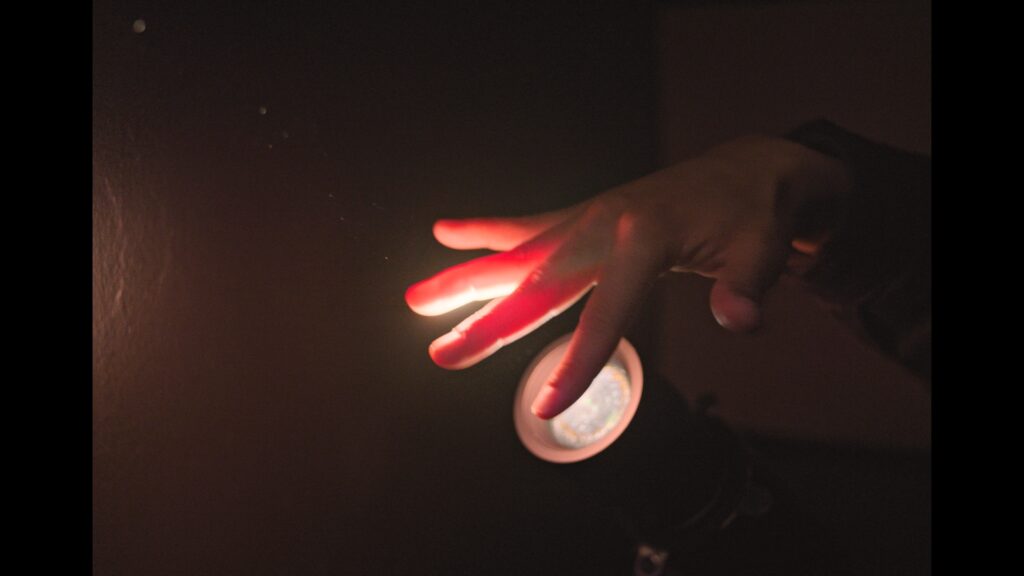
“In my various roles on film sets, I’ve always been attentive to the quality and nuances of lighting…I’ve spent many years color grading, which plays into my strong interest into color science,” astrothebaptist notes.
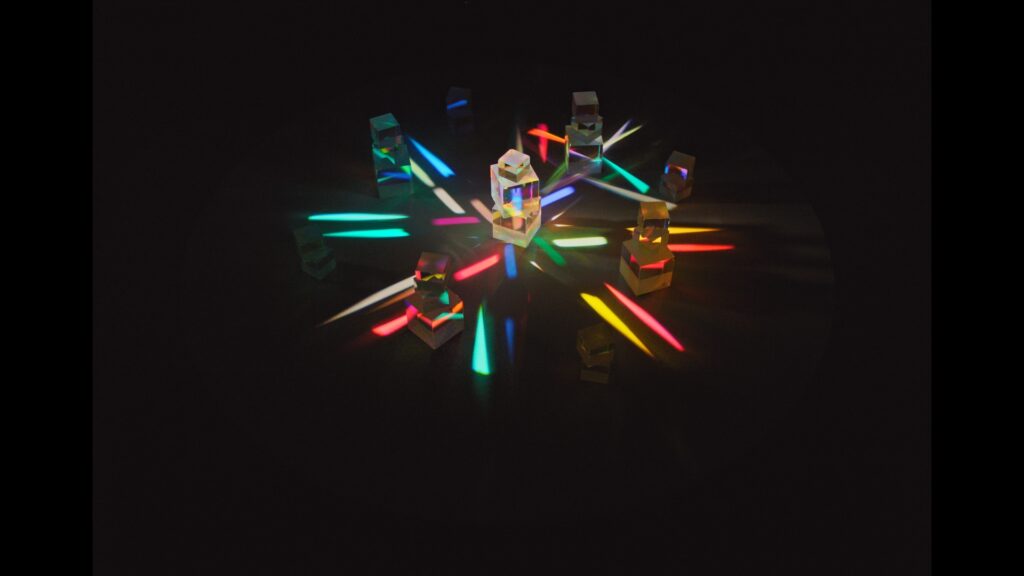
This attention to technical elements has, he says “heightened my sensitivity and receptivity to the intricate details of light manipulation.” When COVID-19 brought the film industry to a halt, he finally had the time to dive deeply into the way he was experimenting and playing with dichroic optical filters, a passion he’d discovered only about 6 months before the lockdown, allowing him to fully journey from discovery and exploration into craft and form.
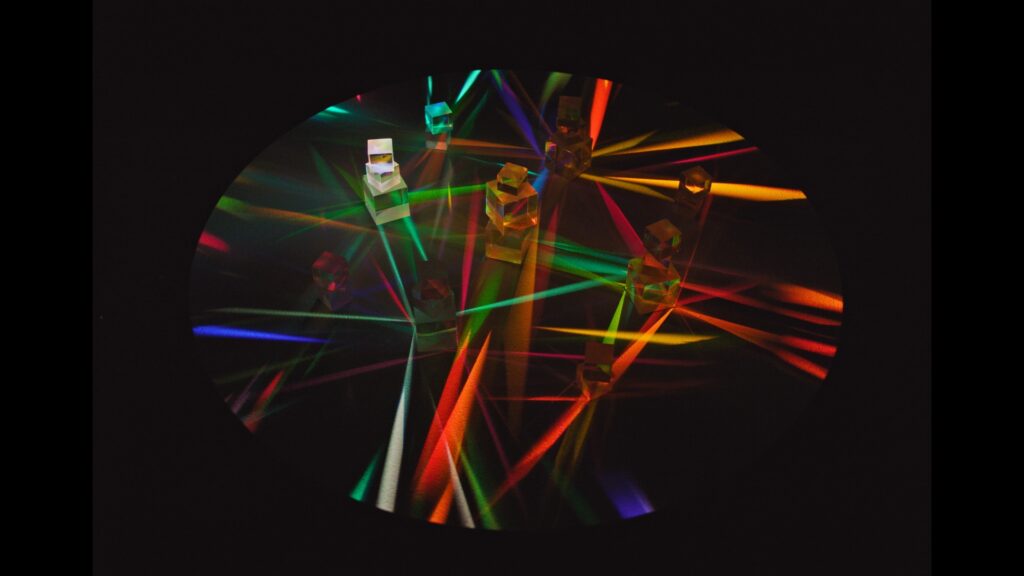
“Finding my original four ‘crayons’ of optical dichroic filters was a natural part of my exploration phase. I scoured the internet for all types of affordable dichroic filters, including cubes, vinyl, glass, and more. However, it wasn’t until I began working on my solo show that I realized just how difficult it was to get a hold of the specific type of optical dichroic filters I was using,” he says. Because he needed to commit materials to permanent pieces, he searched long and hard for an optics lab that could manufacture filters to his exact specifications. Despite the challenge and financial risks, he obtained three new filters that provided him with new options with which to create his art.

And what an art it is. There are flowers and geometric forms and mysterious orbs within his work, which he describes as “a celebration of the intersection between art and science. Through my light art installations and space-inspired pieces, I hope to inspire curiosity and wonder about the cosmos, while also exploring themes of human connection and our place in the universe.”
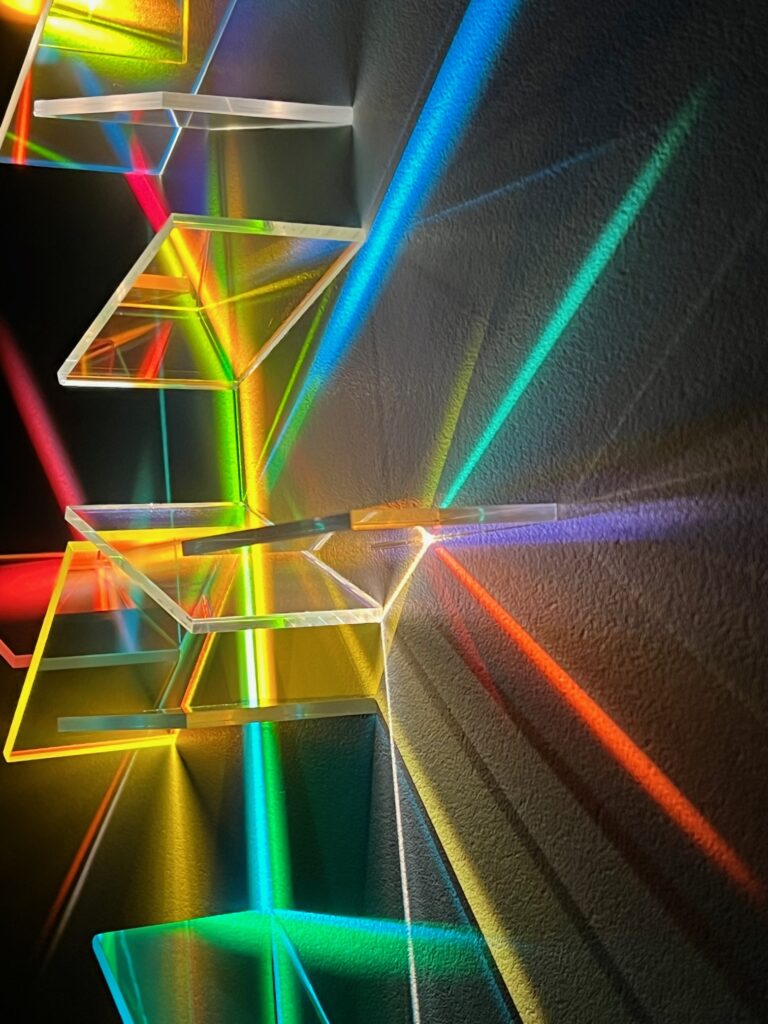
While that’s no small feat, astrothebaptist pulls it all off. The patterns and colors that emerge and the colors that explode are entirely unique and exceptionally, even spiritually, involving for the viewer. It is the kind of art that whether placed in a gallery, home, or museum, it can be viewed many times, and each time the viewer will be compelled to go deeper into its meaning and beauty.
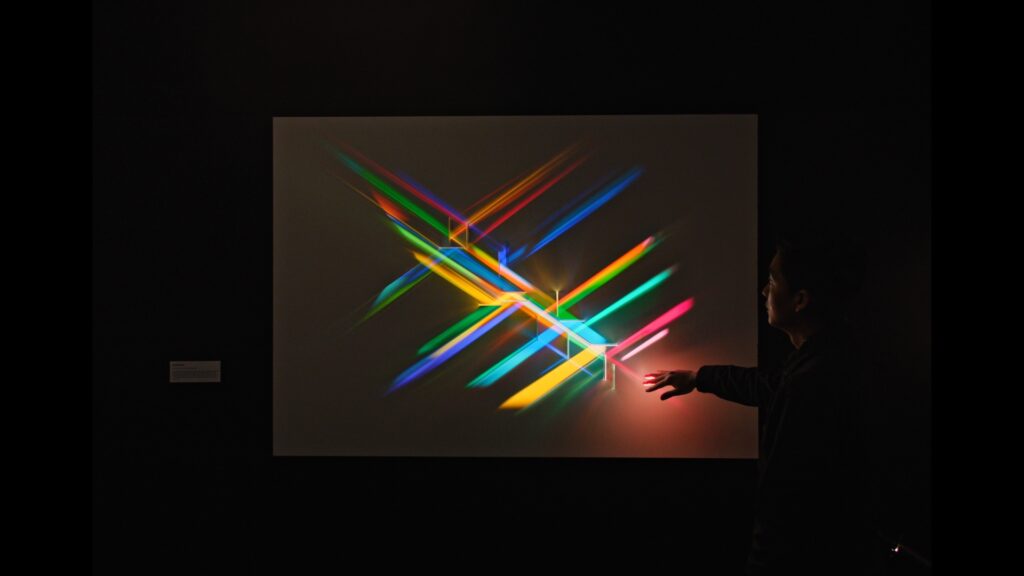
“Kandinsky, one of my biggest inspirations, said it best in Concerning the Spiritual, ‘Color is the keyboard, the eyes are the harmonies, the soul is the piano with many strings. The artist is the hand that plays, touching one key or another, to cause vibrations in the soul,’” astrothebaptist asserts. “Playing with the animation, shapes, and colors has become the way I feel ‘vibrations in my soul.’ He believed that art should move beyond simply depicting the physical world and should instead evoke emotions and spiritual experiences through the use of color, form, and composition.” Kadinsky also didn’t start his art career until the age of 30, the same age astrothebaptist discovered optical dichroic filters, he notes, adding to the sense of connection. Stephen Knapp, who created light paintings with dichroic filters and French conceptual artist Daniel Buren, who works using colored vinyl over windows to create shadows of color using shifting sunlight, are additional inspirations.
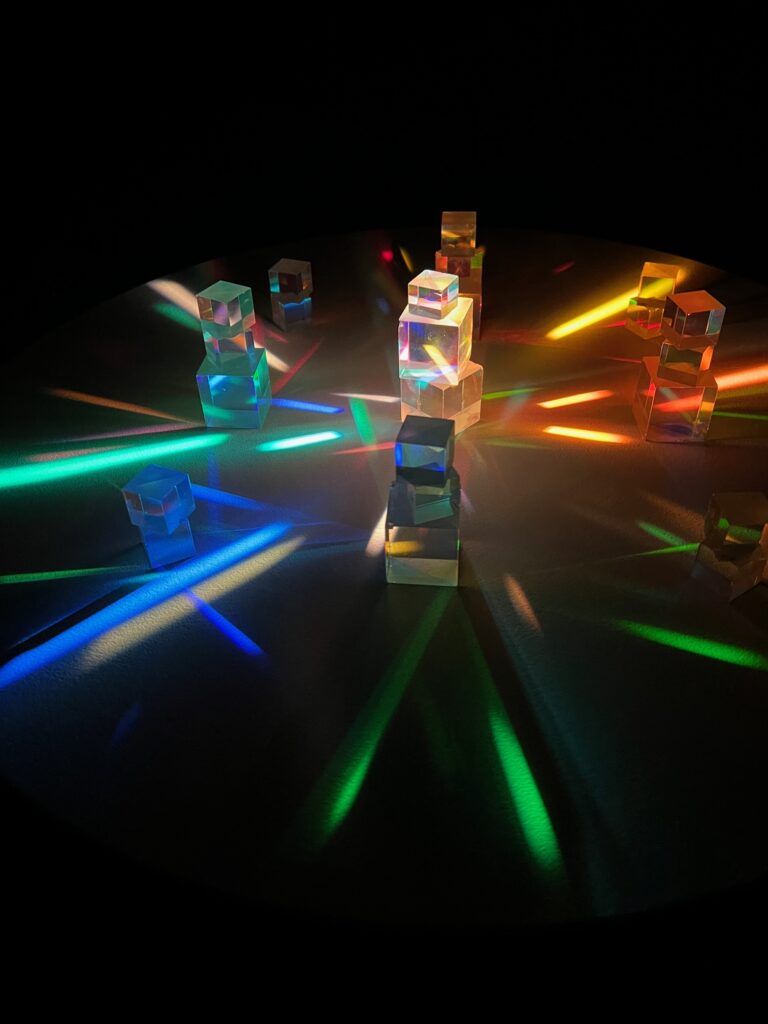
Hoping to create both a public art installation and a musical light show in the near future, astrothebaptist says Home in Space “represents a significant moment in my artistic journey…my first showcase of any work featuring dichroic glass and light. The result is a journey through the darkness of the cosmos, where each piece of art is revealed one by one, through the interplay of light.”
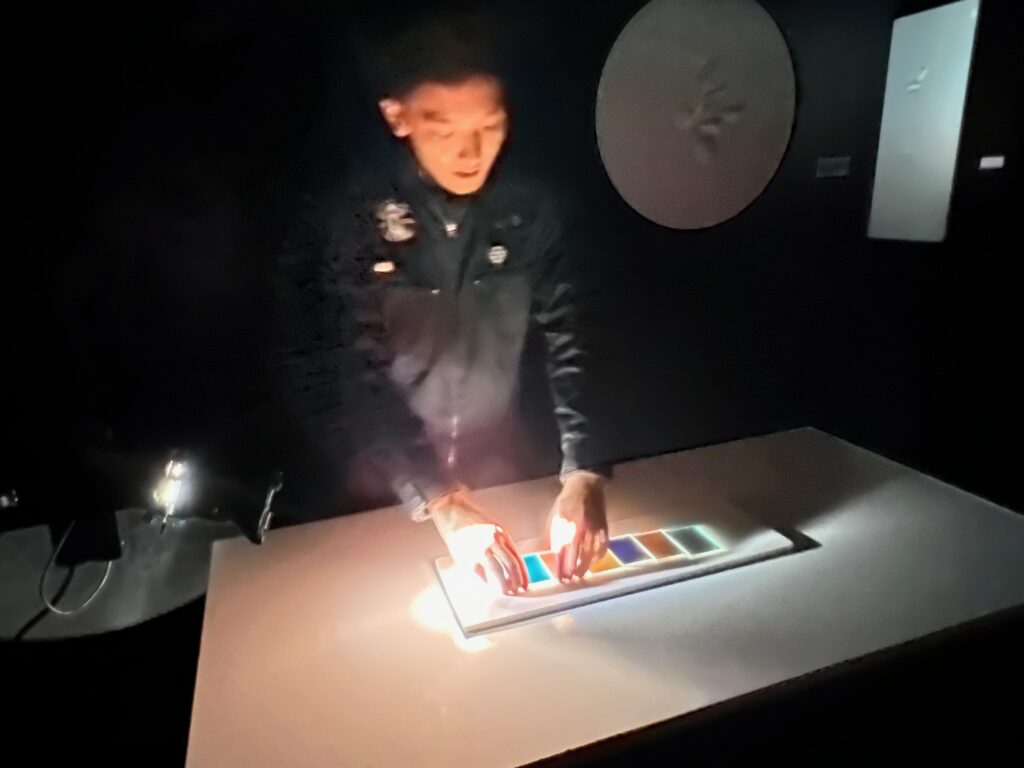
As he illuminates each piece one by on, explaining both his process and journey he allows viewers to discover something new with each image, watching the transformation of glass and canvas into alchemic color and visual magic.
“As the finale, I added a live light show to music, followed by a casual monologue…[sharing] my personal story of discovering my love for playing with light and color.” He says he had three key aims for the exhibition “to educate, inspire, and connect viewers with the power of light.” But, he may have left out the part of the exhibition that most spoke to me: he has created a world within or beyond our own, and an artistic journey like no other witnessed in my viewing of hundreds of art exhibitions. To say astrothebaptist’s work is special is far too small a summary.
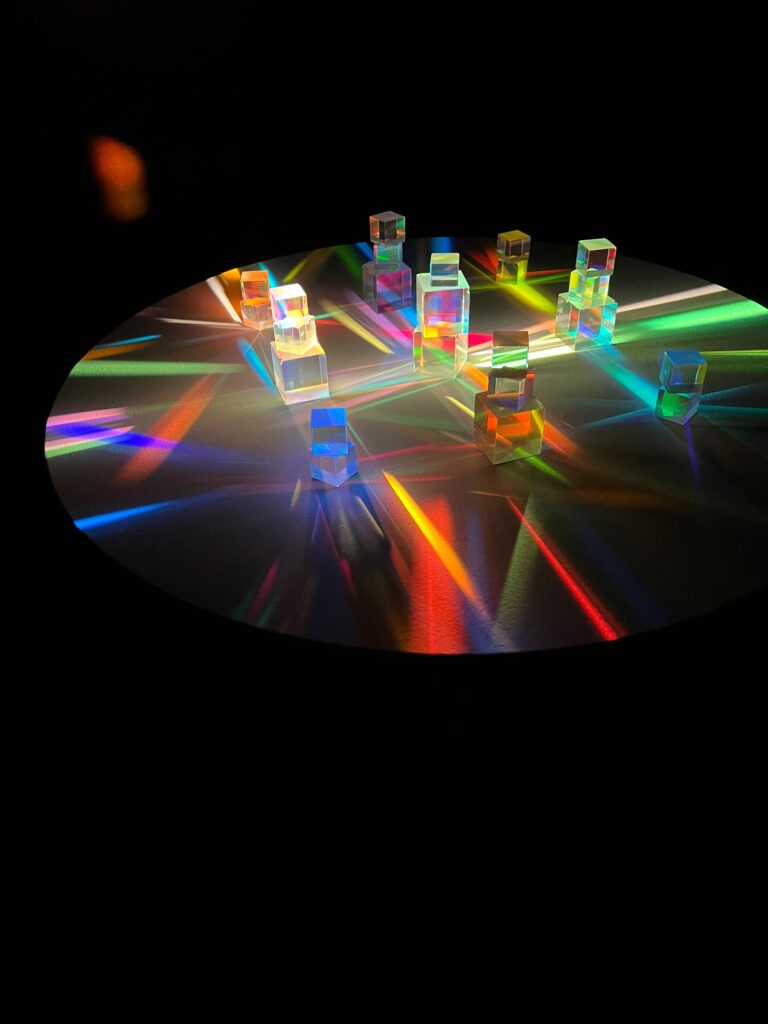
With Home in Space about to close, the artist’s next show will be at the Brewery Art Walk this coming April 29th and 30th. While he will not be able to provide a full guided experience there, he will be exhibiting many of the same mind-blowingly lovely pieces, and perhaps including once again his personal collection of vintage tin space toys, inspirations, and digital photographs of previous works.
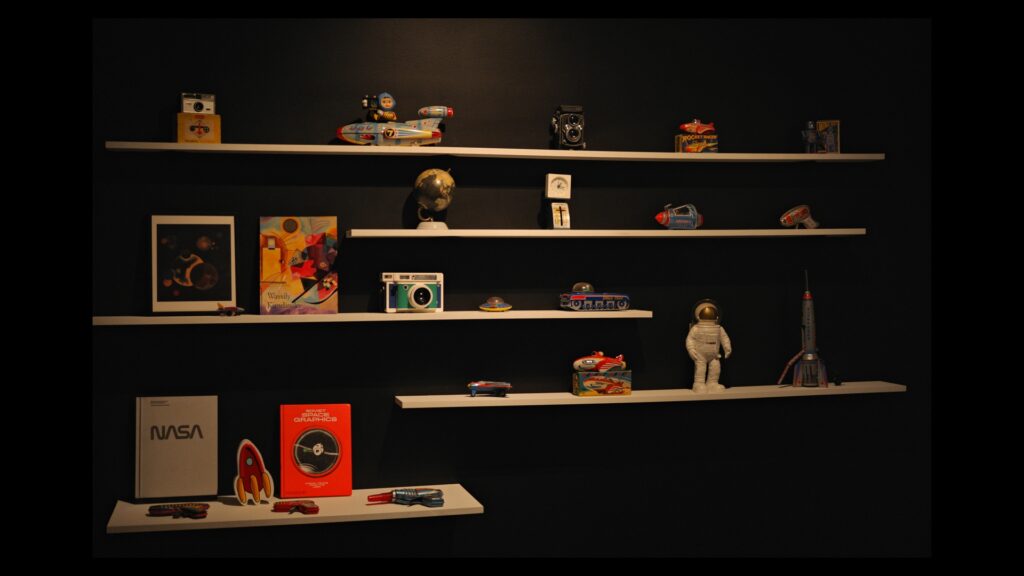
To learn more and experience astrothebaptist’s art, visit him at: www.astrothebaptist.space
- Genie Davis; photos by Genie Davis and Megan Johnson














